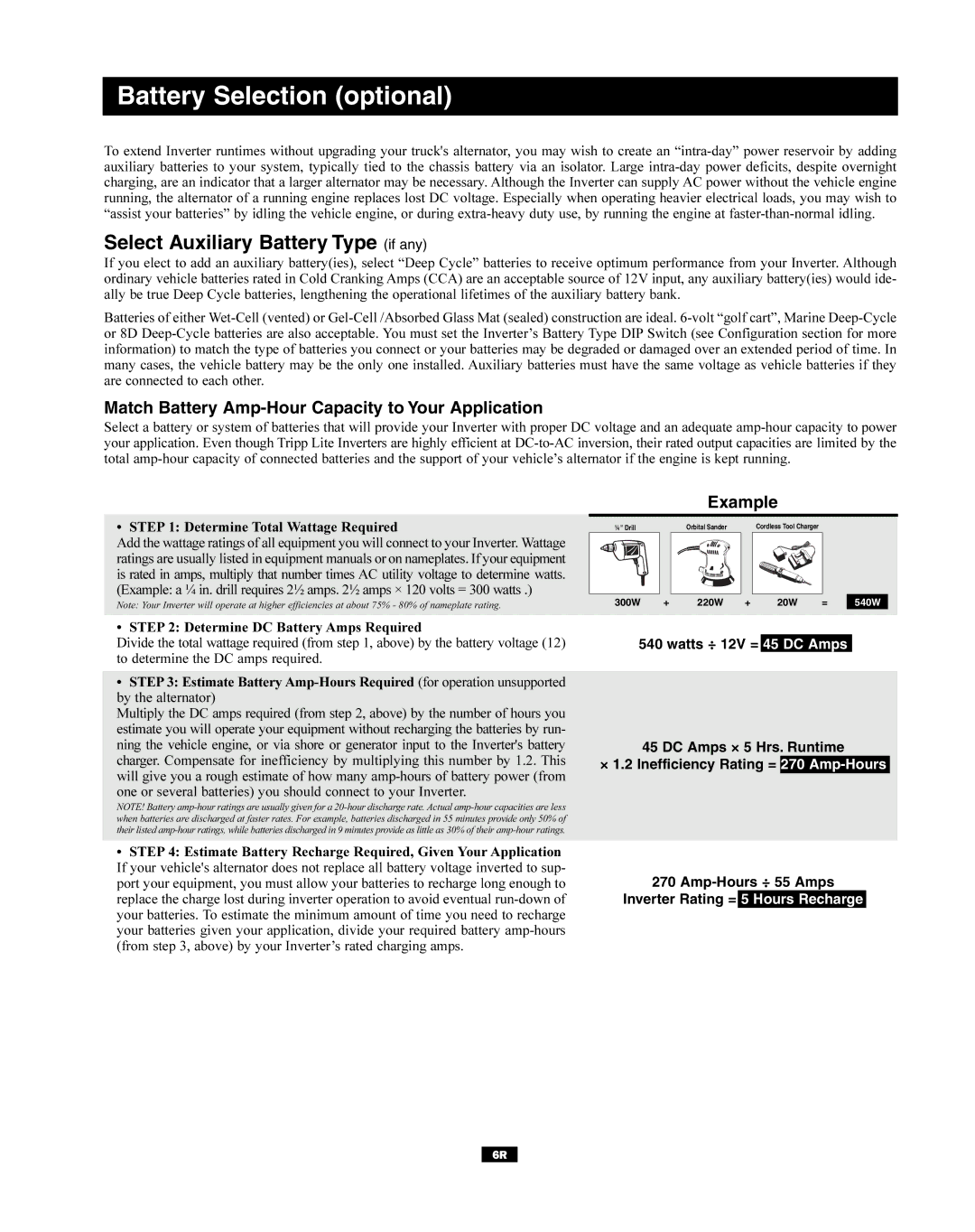
Battery Selection (optional)
To extend Inverter runtimes without upgrading your truck's alternator, you may wish to create an
Select Auxiliary Battery Type (if any)
If you elect to add an auxiliary battery(ies), select “Deep Cycle” batteries to receive optimum performance from your Inverter. Although ordinary vehicle batteries rated in Cold Cranking Amps (CCA) are an acceptable source of 12V input, any auxiliary battery(ies) would ide- ally be true Deep Cycle batteries, lengthening the operational lifetimes of the auxiliary battery bank.
Batteries of either
Match Battery Amp-Hour Capacity to Your Application
Select a battery or system of batteries that will provide your Inverter with proper DC voltage and an adequate
Example
• STEP 1: Determine Total Wattage Required
Add the wattage ratings of all equipment you will connect to your Inverter. Wattage ratings are usually listed in equipment manuals or on nameplates. If your equipment is rated in amps, multiply that number times AC utility voltage to determine watts. (Example: a ¼ in. drill requires 2½ amps. 2½ amps × 120 volts = 300 watts .)
Note: Your Inverter will operate at higher efficiencies at about 75% - 80% of nameplate rating.
¼" Drill | Orbital Sander | Cordless Tool Charger |
300W | + | 220W | + | 20W | = | 540W |
• STEP 2: Determine DC Battery Amps Required
Divide the total wattage required (from step 1, above) by the battery voltage (12) to determine the DC amps required.
•STEP 3: Estimate Battery
Multiply the DC amps required (from step 2, above) by the number of hours you estimate you will operate your equipment without recharging the batteries by run- ning the vehicle engine, or via shore or generator input to the Inverter's battery charger. Compensate for inefficiency by multiplying this number by 1.2. This will give you a rough estimate of how many
NOTE! Battery
540 watts ÷ 12V = 45 DC Amps
45 DC Amps × 5 Hrs. Runtime
× 1.2 Inefficiency Rating = 270
•STEP 4: Estimate Battery Recharge Required, Given Your Application If your vehicle's alternator does not replace all battery voltage inverted to sup- port your equipment, you must allow your batteries to recharge long enough to replace the charge lost during inverter operation to avoid eventual
270
Inverter Rating = 5 Hours Recharge
6R
